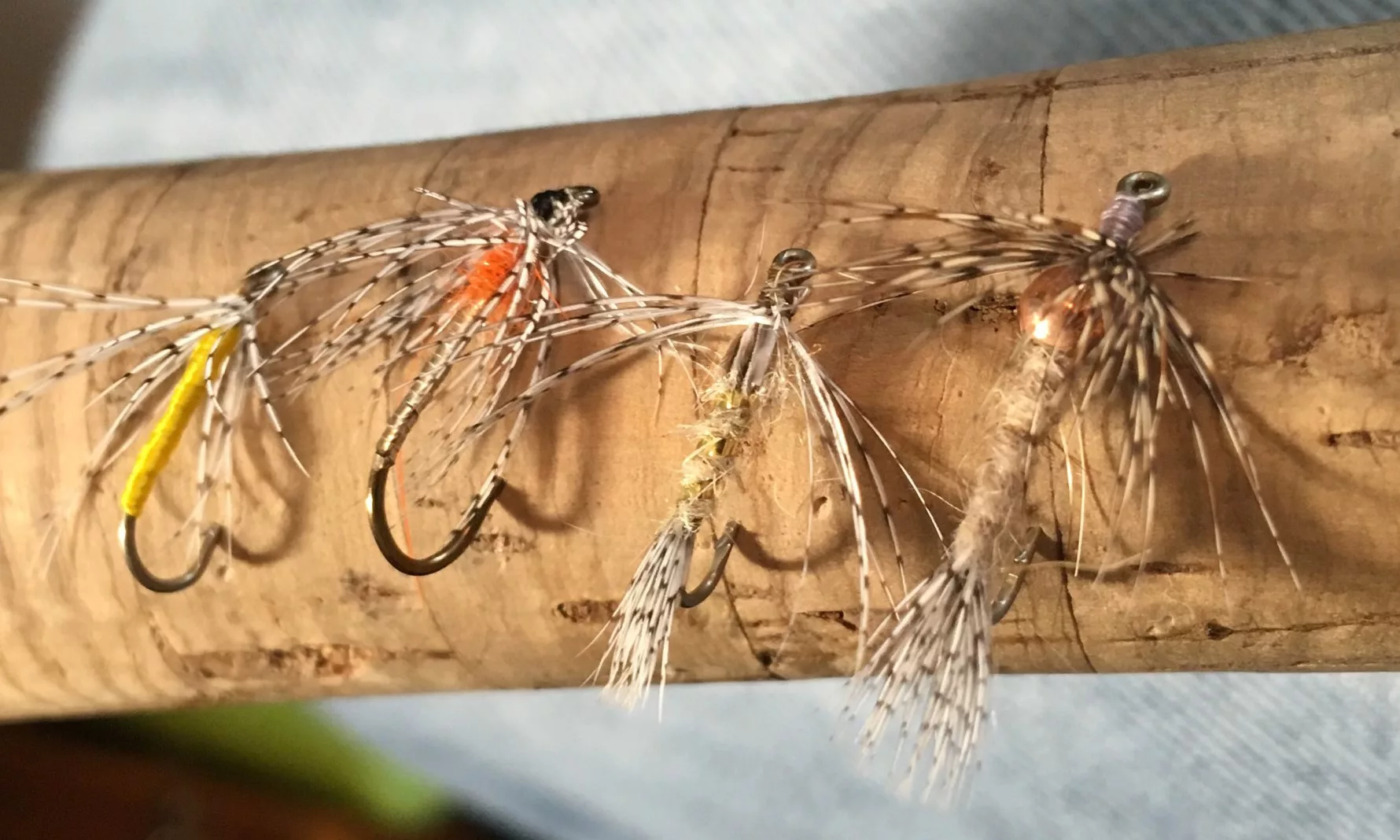
Partridges.jpg – The light-and-dark of partridge feather fibers can easily be implemented into classic fly patterns and set off with some super-flashy and fun materials to add plenty of color to a fly, lure or jig. From left to right: the partridge-and-yellow, a partridge mini-minnow, a soft-hackle gold-ribbed hare’s ear nymph, and a bead-thorax soft hackle. Simonson Photo.
By Nick Simonson
Far less heralded than its upland counterparts such as sharptailed grouse and rooster pheasants in the field, the Hungarian partridge is also less colorful, especially when compared to the former’s feathering. However, the barred feathers found on the Hungarian partridge are an integral part of many flies and lures for everything from panfish to trout to bass and make excellent tails, wings and soft hackles on flies, weighted ice lures and even small jigs. What follows are some of the more common uses for these great utility fibers on a fly or lure, and good ways to set off the barred pattern of the partridge with a little more panache.
Partridge and [Insert Color]
If you’ve ever looked at the legs of an orb weaver spider, such as a large, mature barn spider frequently seen this time of year, you get a similar vibe to the patterning on a partridge feather. Dark bars set off against light gray sections are just part of the reason that soft hackled flies with a simple wrap of the feather are called “spider” flies. In these classic patterns often consisting of just two materials – the turn or two of partridge feather as a collar and a wrapped body of floss, dubbing or other material from the hook bend to the feather – the thorax is often a bit flashier to set off the monochromatic light-and-dark fibers of the feather.
The partridge and yellow is a classic spider fly that does just that, providing a bright target in the back with the flux and flow of the feather fibers up front which imitate a pulsing set of gills, legs, or other appendages of an aquatic insect. The entire rainbow is at a fly tyer’s disposal, as the partridge and orange is a common variant of this recipe, but red, purple and silver floss work well too and help round out a row of these flies in a box quite nicely. Consider wrapping various shades of krystal flash to mimic a small just-hatched minnow too, and utilize whatever shiny material is on hand to try out new patterns that match whatever small baitfish are hatching next spring.
Pairs Well with Anything
The barred partridge feather can be substituted in a number of flies beyond the soft hackle around the collar of a recipe. When tying up gold-ribbed-hare’s ear nymphs, use it as the shell, or even a small set of gill fibers along with the tail where it’s a staple. Consider it as a post on dry flies such as parachute-style patterns, or even on foam flies as an indicator wing. The light and airy nature of the fibers make them a great substitute for pheasant tail fibers, and they can replace any commercial hackling on small bluegill ant and spider jigs with lead head and thorax sections, or custom paint your own ant jig and then add in some partridge fibers died easily with a colored Sharpie marker before being locked in with a few wraps of thread.
While things may be a bit black-and-white when it comes to the feathers of a Hungarian partridge, don’t let that stop you from getting creative with the fibers that have superior form and some super shimmy in the water. Add them in where any light, airy fiber is needed to turn fish on and flip the switch by adding your own color or using dyed variants to get the most out of any pattern that calls for partridge or similar material.
Simonson is the lead writer and editor of Dakota Edge Outdoors.
